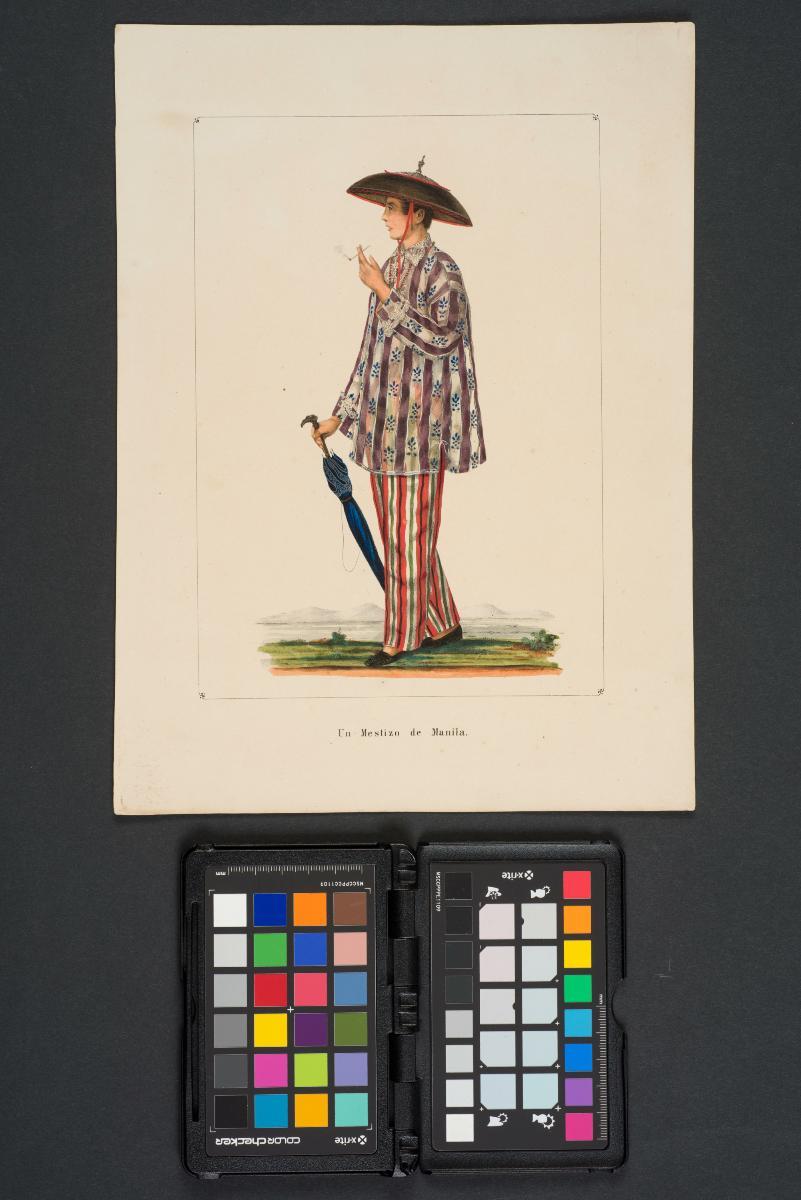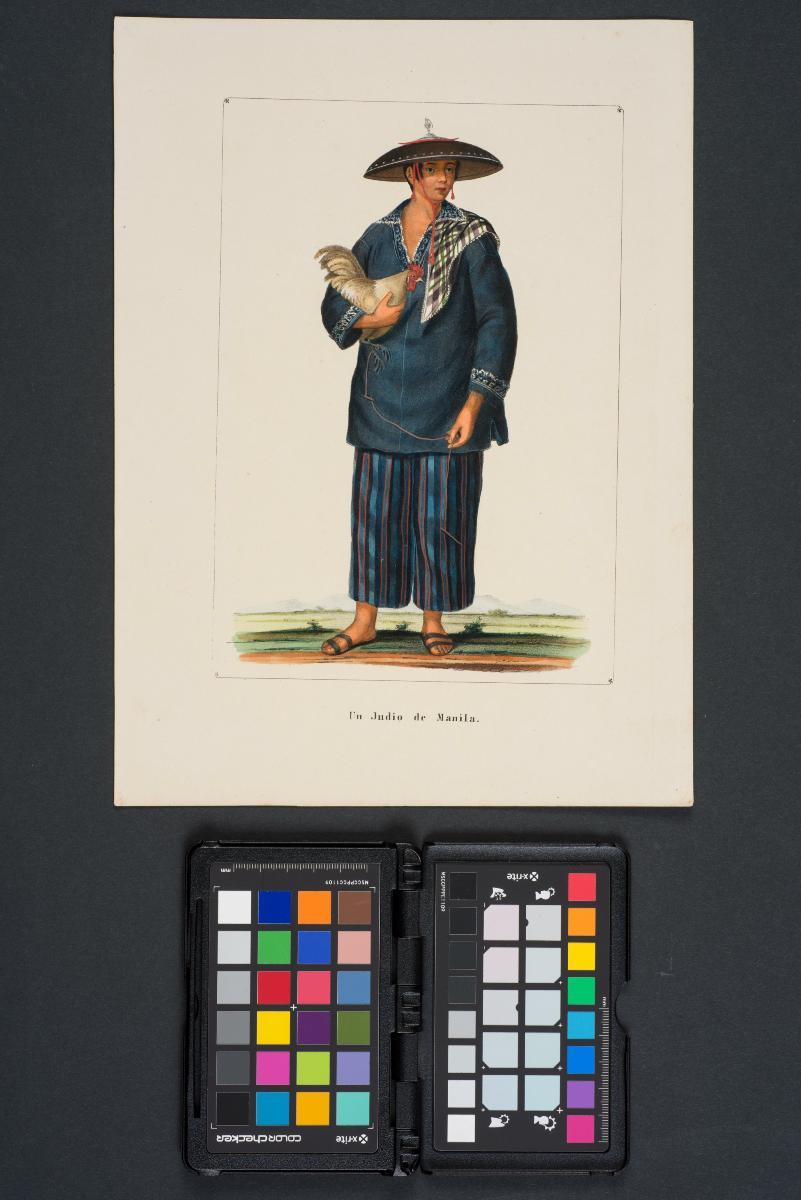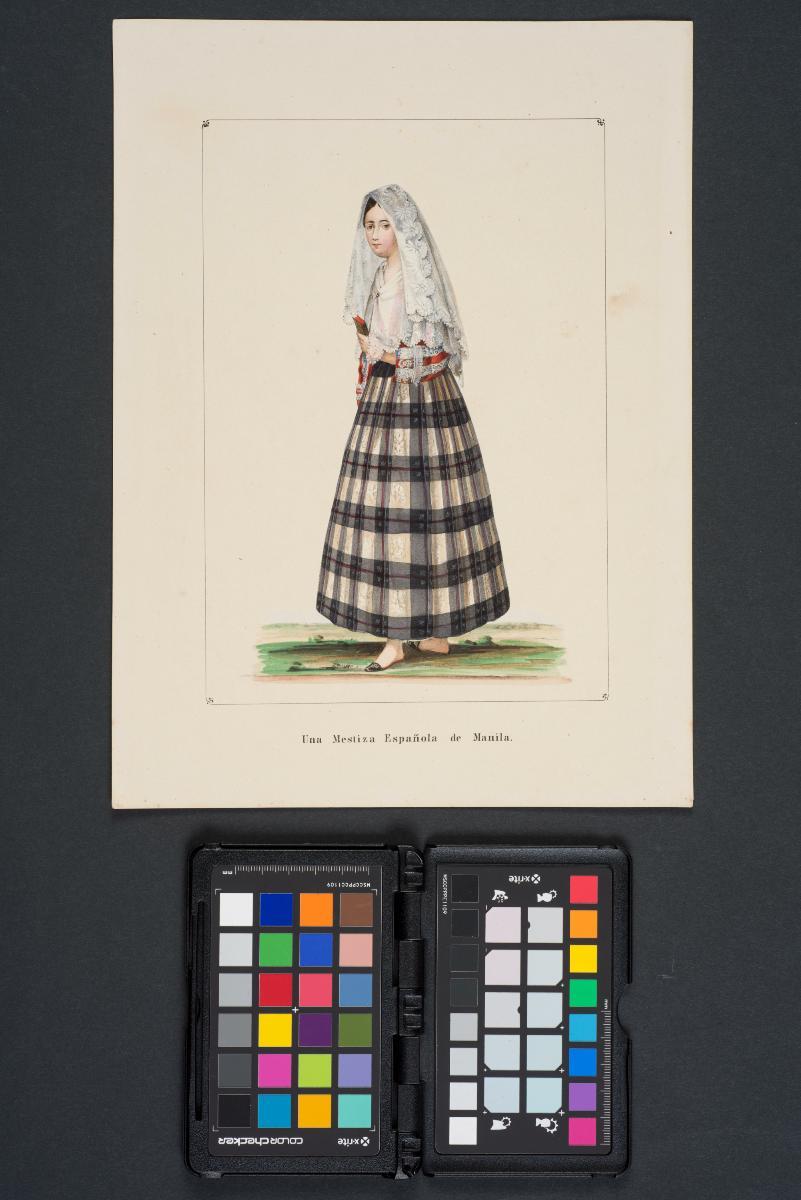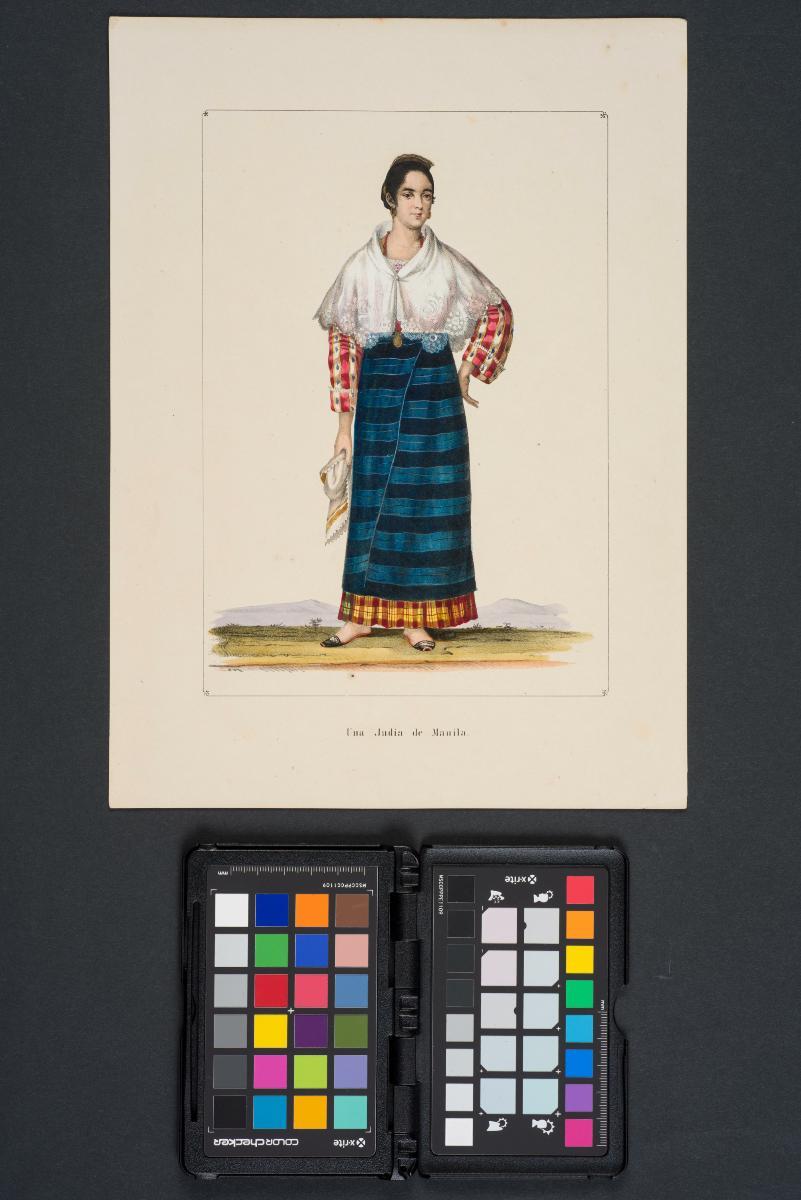This set of six hand coloured-lithographs are made after a waterolour series by Justinian Asunción. Asunción was an important nineteenth-century painter from the Philippines, known for his mastery of miniaturismo technique, and his fine work in portraiture and tipos del pais (“types of the country”). Tipos del pais was a genre of images popularised in the Philippines in the 19th century. Primarily sold as picturesque souvenirs to international traders or tourists, tipos del pais images represent local inhabitants and their costumes. In the Philippine style, such works are generally drawn in vivid detail, with particular attention paid to costume and fabric. This series of prints is a strong representation of the minutist and exquisite style typical of Asunción. Each figure has a finely-drawn and individualised face, and particular attention has been paid to the nuances of costuming, including capturing extremely fine details such as the translucency of fabric or the filigree of lacework. The historical significance of tipos del pais can be linked to Manila’s opening as a trade port in the early nineteenth century, as well as being a visual metaphor for the social stratification of colonial society, in which different ethnic and “mestizo” cultural groups were afforded different social roles and privileges.















